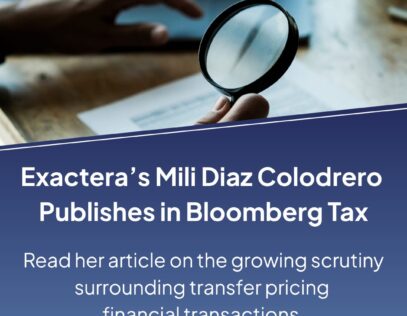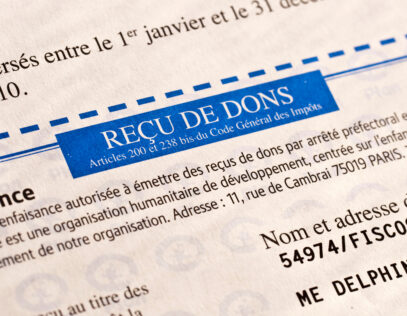Coca-Cola is a company that likes the limelight. Back in 1971, the company was in the news for its iconic “I’d like to buy the world a Coke” ad. Years later, in 2015, that same ad made headlines again after being portrayed in the advertising world of Mad Men.
Even more recently, Coca-Cola has made headlines for introducing a soft drink and brand defined by a missing ingredient, “Zero Sugar,” (kind of brilliant), donating money to Gulf Coast hurricane relief, and entering the coffee market with the purchase of Costa Coffee. Pretty exciting times for the beverage giant, indeed.
But like every celebrity knows, not every headline is good news. In December of 2020, the company made tax news for a years-long tangle—and ultimate defeat–with the IRS. This wasn’t a little bit of trouble, either. It was roughly $3.3 billion worth of trouble. How did an upstanding multinational find itself in such an unenviable position? The company made one big mistake: It failed to give enough consideration—some critics might argue any consideration–to the transfer pricing of its intangible goods.
Of course, Coca-Cola is not the first company to stumble over the transfer prices of intangible assets. Medtronic, Glaxosmithkline, Amazon, Dupont, among others, have all found themselves in the hotseat with the IRS. Coca-Cola’s case is special though, because it marks the first transfer pricing victory for the IRS in years—a verdict that stands to affect more than just Coca-Cola. A win like this gives the IRS confidence to pursue more transfer pricing audits in the future.
Could your company be next?
Transfer pricing is built on a foundation of determining value and, when relevant, assigning it to intellectual property—valuable assets that you can’t see, or touch. For transfer pricing executives, it can be one of the most mystifying parts of the job.
How much is a famous logo worth? Where does Coca-Cola’s value come from? Is it the string of popular beverages? Or is it the marketing efforts? Or the years of branding that makes the company recognizable as an industry leader? And why does that matter so much to tax authorities?
Those types of questions are precisely what we’ll be tackling right here. On the following pages, we’ll highlight how tax authorities and the OECD view intangibles. We’ll see the implications for taxpayers, and most importantly, the strategies taxpayers can employ to fly below audit radar.
Tax Authorities and Intangibles
Whenever we talk about tax authorities and transfer pricing, there’s the subtext of base erosion and profit shifting. You’ve heard it before: Tax authorities worry about multinational companies shifting profits into low- or no-tax jurisdictions and eroding the tax base in higher ones.
An easy way to accomplish that is by moving profits tied to assets you can’t see or touch—trademarks, brand names, product formulas. In other words, buying, selling, or licensing intangible good between related parties—or, as we say, transfer pricing with intangibles.
The funny thing is, assets you can’t see, or touch can be the most valuable goods a company owns. A trademark, for example, can be more valuable than real estate or inventory. Intangible assets drive value and give multinational companies a competitive edge. As Barbara Mantegani, a tax attorney in Washington, DC, said in a Bloomberg article, “It’s clear that intangibles are where the money is.”
The IRS is one of many tax administrations that looks closely at companies who shift IP. Authorities in Australia, Belgium, Canada, China, Kenya, among most other countries, have openly expressed special interest in royalty payments linked to leasing intangible assets. And by “special interest,” we mean, these are among the first transactions they’ll unpack for potential audits. Bottom line: If tax authorities are paying special attention to how intangibles are valued and the arm’s-length nature of royalty payments, then multinational companies should be paying close attention, too.
Intangibles and the OECD
Transfer pricing with intangibles has become such a hot bed of uncertainty, that the OECD has stepped in with much-needed guidance for both tax authorities and taxpayers. BEPS Action 8 is solely devoted to clarifying how to treat intangibles, and Action 9 advocates aligning economic returns to the source of value creation.
So, what does the OECD recommend in terms of transfer pricing with intangible assets? First, it tells companies how to identify intangibles for transfer pricing purposes; next, it talks about valuing and transferring ownership of intangibles; and finally, it discusses which entity has the rights to intangible returns.
Now, how do you identify an intangible asset? The OECD notes three characteristics: An intangible is NOT a physical or financial asset; it is something that can be owned or controlled; and if an independent party let another independent party use it, then that use would require compensation. If those three conditions are met, you have an intangible asset for transfer pricing purposes.
Let’s turn back to Coca-Cola for a moment. The company owned one of the most recognized trademarks in the world, and also, a secret formula—the magic behind its soft drinks. Let’s look at the OECD’s definition of intangible: Are Coca-Cola’s trademark and secret formula physical or financial assets?
No. (Check.) Can the trademark and formula be owned and controlled? Yes. (Check.) If an independent party wanted to use it, would there be compensation for such use? Yes. (Check, check, check.) So, Coca-Cola would—as it did—identify these assets as intangible assets for transfer pricing purposes.
Trademarks and secret formulas aren’t the only intangible assets that related parties share between them. There are also patents, know-how, trade names, brands, contracted rights, and licenses. However, certain untouchables—such as group synergies, market-specific advantages/conditions, and assembled workforce—are not considered intangibles for transfer pricing purposes, because they’re not owned by a particular entity.
In terms of valuing intangibles, the OECD doesn’t set forth an exclusive method. The OECD recommends five transfer pricing methods: the comparable uncontrolled price method; the resale price method; cost plus method; transactional net margin method (in the U.S. known as the comparable profit method); and the profit-split method. All five transfer pricing methods can be applied to transactions involving intangible assets.
An intangible is NOT a physical or financial asset; it is something that can be owned or controlled; and if an independent party let another independent party use it, then that use would require compensation.
The Thing About Unique Intangibles
So, what is your goal with intercompany transactions that involve intangibles? The goal in transfer pricing is always to show that prices—including royalties, which are commonly at the heart of transactions involving intangibles—are priced at arm’s length.
To that end, the OECD wants taxpayers to perform due diligence, as they would with transactions involving tangible goods. For instance, the OECD recommends that taxpayers examine prices from the transferor and the transferee’s perspectives. That’s not surprising. Where transfer pricing is concerned, looking holistically at the transaction is kind of a no-brainer, right?
What gets a little messy with intangibles though, is they have unique features, and the OECD says those features have to be evaluated. Brand names aren’t unique features, but the brand name, “Coca-Cola” is one-of-a-kind.
The company’s secret soft-drink formula is also one-of-a-kind. But how do you evaluate unique assets? How do you find comparables for those? What happens if you can’t? The OECD also recommends that taxpayers consider where value was created, and the facts and circumstances around that value.
So, if intangibles are unique—incidentally, only some are—and it’s challenging to find reliable comparables, are you off the hook in terms of proving the arm’s-length nature of your transaction?
Absolutely not. You just have to abandon the traditional transfer pricing methods and come up with other ways to do it. OECD Guidelines, the transfer pricing bible, recommend three basic valuation techniques to estimate the arm’s-length pricing of intangibles: the market approach; the income approach; and the cost approach.
The market approach is similar to the CUP method and lets taxpayers determine value based on actual market transactions. Of course, it requires market data from comparable transactions, and if you have the data, it can be a reliable way to determine the value of intangibles.
If you don’t have the data, you might consider the income approach, which evaluates and forecasts income and expenses surrounding the intangibles. The cost approach, which is generally discouraged by the OECD, looks at intangible assets based on the cost to create them.
Generally speaking, the CUP and the profit-split method are likely to prove the most useful when evaluating intangibles. Valuation techniques can be used, but with caution.
As you get into the weeds of transfer pricing—and when we’re talking about valuation techniques, we are definitely in the weeds—it’s good to keep reminding yourself of the objective: to prove which entity has the rights to intangible returns. That’s the very issue that landed Coca-Cola in tax court. From 2007-2009, Coca-Cola had routine manufacturers, supply points in various countries, which manufactured concentrate.
This meant that those manufacturers, procured raw materials and used Coca-Cola’s guidelines and production technology—all unique intangibles, by the way—to turn the raw materials into Coca-Cola’s secret concentrate. Independent bottlers finished the job, adding ingredients like purified water, carbon dioxide, sweeteners, etc., into the concentrate, bottling the beverage, and delivering them to retail hubs.
Atlanta-based Coca-Cola was the legal owner of the trademarks related to its beverages, which include Coke, Fanta, and Sprite, and the U.S.-based company designed its own global marketing campaigns. Coca-Cola granted rights to produce and sell concentrate to the supply points and granted limited rights to Coca-Cola trademarks linked to production and sales activities.
Now, here’s where things get suspicious to tax authorities: Only two supply points had staff devoted to sales—supply points without staff is a red flag. And as Judge Albert Lauber wrote, “Why are the supply points, engaged as they are in routine contract manufacturing, the most profitable food and beverage companies in the world?” Another red flag. And here’s one more: Why does the profitability of the routine manufacturers dwarf that of the parent company? Intangible returns didn’t seem to be allocated based on each entity’s contributions. A huge red flag.
A New Way to Analyze Functions, Assets, and Risks
In transfer pricing, the foundation of any economic analysis is the functional analysis—determining which entity performs which functions, contributes which assets, and assumes which risks is the start to determining which entity earns the most profits.
When it comes to transactions involving intangibles, however, we need to go about it differently. The OECD says to evaluate functions by looking at contributions to the development, enhancement, maintenance, protection, and exploitation of an intangible asset—what we commonly refer to as the DEMPE functions.
Before the OECD introduced the DEMPE functions, taxpayers and tax authorities favored form over substance. Say a company had an entity that owned all of the intellectual property. But maybe that entity had zero employees. Maybe it wasn’t selling anything to customers.
Maybe it was a shell company. And yet, that entity was getting all of the profits related to the intangibles. The OECD looked at arrangements like that and said, “Well, that doesn’t make any sense.”
IP can be the heart of a company. The OECD wanted to know who is performing the DEMPE functions and advised that profit allocation be based on those findings. So, when dealing with intercompany transactions involving intangibles, taxpayers have to look at the group and determine which entity develops the IP? Which entity enhances it? Which entity maintains it, protects it, and exploits it for their own uses? Evaluating these functions will help determine arm’s-length profit allocation.
The Legalities
Every taxpayer needs to ensure that intercompany contracts align with the functions in those analyses. For Coca-Cola, this was yet another red flag. First of all, the company adhered to an out-of-date closing agreement with the IRS, which covered arrangements from 1987 to 1995; meanwhile the tax issues at hand began in 2007.
A rookie mistake. So, perhaps a key lesson for taxpayers is to make sure any contractual agreements that pertain to your IP—or any other asset, for that matter—are up to date. Review contacts every year to ensure they still reflect that reality of your business.
Coca-Cola, of course, also had contracts with its supply points. But as the court pointed out, those contracts often seemed terse and incomplete. Certainly, Coca-Cola is not alone in this department, as many companies have contracts that are ambiguous or don’t reflect the reality of their businesses.
There’s probably even more today thanks to the restructurings that became necessary due to COVID-19. Granted, it may seem like housekeeping, but those contracts are there for your company’s protection—and they can’t shield taxpayers from anything if they are outdated, vague, or not keeping up with the twists and turns of an evolving business.
Now that you’ve identified and valued intangible assets, it’s time to think about the rights to intangible returns. Where profits regarding intangibles should be allocated, and what the arm’s-length allocation of those intangibles is.
We start by determining the legal owner of the intangibles that were transferred. In the case of Coca-Cola, it’s the U.S.-based parent company that owns the trademarks, the secret formulas—all of it.
The U.S.-based parent isn’t just the legal owner, but it performs the DEMPE functions and bears the operational and financial risks. Now, should the entity absorbing the risks differ from the entity performing the DEMPE functions, there needs to be a reason, and it should be addressed in transfer pricing documentation, long before a tax authority has a chance to ask about it.
Finally, it’s time to address the initial goal: Does the pricing appropriately reflect the contributions of the relevant parties? In the case of Coca-Cola, the IRS—and ultimately, the court—said, no. Routine manufacturers should get routine returns. They should not be the most profitable entities when the parent company owns the assets, assumes the DEMPE functions, and bears all of the risk.
Review contacts every year to ensure they still reflect that reality of your business.
Challenges for Taxpayers
Transfer pricing with intangibles comes with its own set of challenges for taxpayers and tax authorities. Taxpayers can struggle with reliable comparability on the most straightforward transactions, but intangible property, with their often, unique characteristics, add a whole other layer to that.
Intangibles may be owned by one entity and used by another, which can make profit determinations difficult. It can also be hard to isolate the impact of the intangibles on the group’s overall income. How do you determine how much the Coca-Cola trademark plays into sales vs its secret formula or brand? And of course, country-specific regulations and interpretations will always vary between jurisdictions that are home to the entities that share the use of IP.
Due diligence may be the only way to overcome the hardships of transfer pricing with intangibles. In so many countries, just having transfer pricing documentation available can prevent penalties, so that already makes the effort worthwhile.
Documentation must accurately explain the transaction, define the intangibles involved, and show that profit allocation is aligned with the entities that own IP, contribute most to the DEMPE functions, and assume the most risk.
Inconsistent contracts and arrangements, out-of-date agreements, and extreme profits in the pockets of routine service providers will only provoke warranted skepticism from tax authorities, which will likely lead to audit.
Given its big, $3.3 billion win, the IRS may be even more committed to examining transfer pricing involving IP. Thanks to Coca-Cola, the IRS now has the case law to support transfer pricing audit positions, which are a high return for tax authorities.
So, multinational companies need to be proactive. If the Coca-Cola case has taught us anything, it’s that it pays to analyze transactions involving intangibles thoroughly and it’s critical to keep contracts current and review them annually to ensure they reflect the reality of your business. Consider that a $3.3 billion lesson.
Visit RoyaltyStat.com to learn more about the industry’s premier royalty rates database, trusted by the world’s largest accounting firms, consultancies and law firms.








